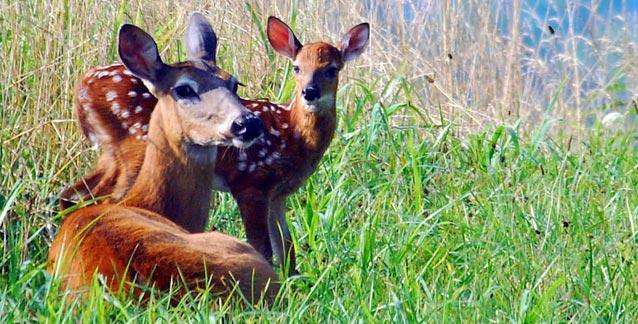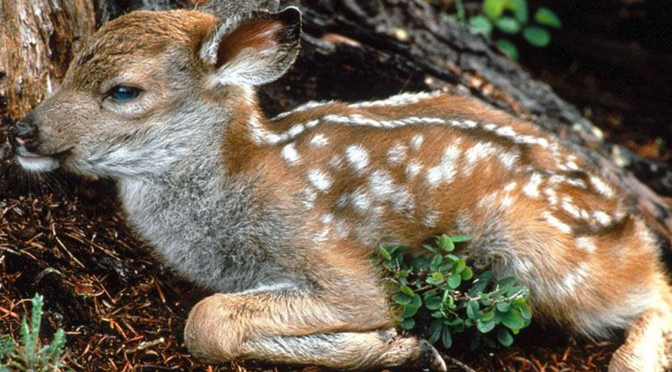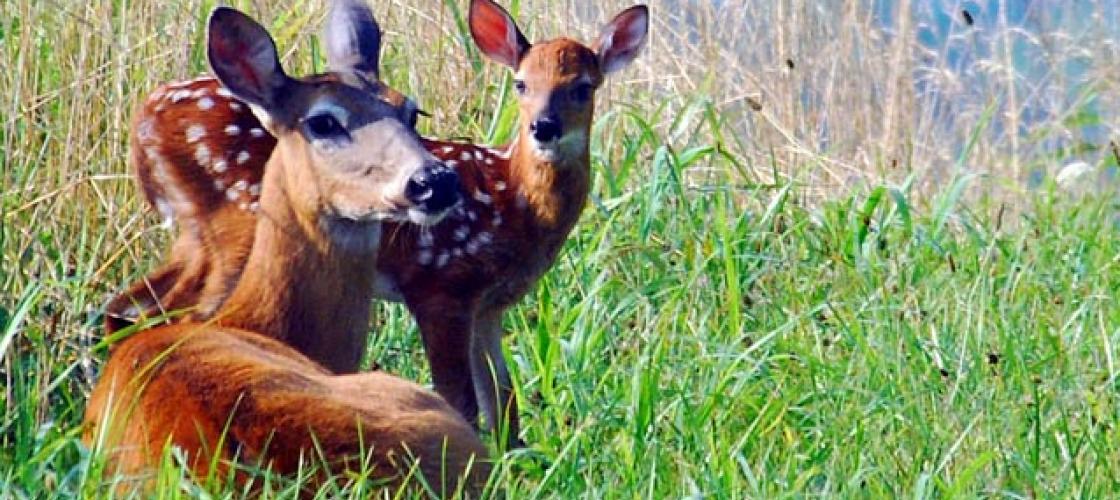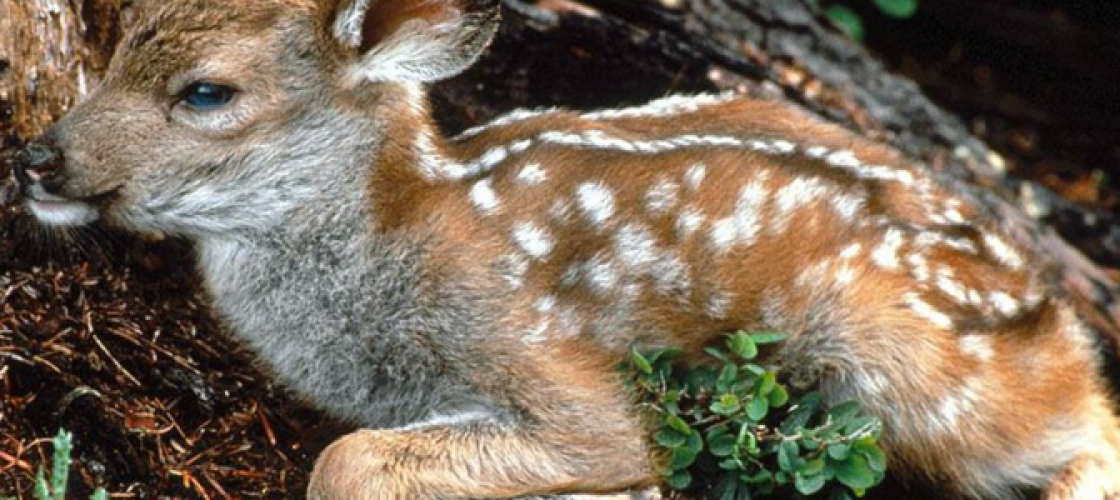The delicate features of a deer fawn always seem to bring an “ooh” from even the gruffest of folks. A fawn’s endearing look of helplessness has caused many to be taken from the wild.
Most people associate the deer fawns they see with “Bambi,” Walt Disney’s adorable orphan. And, the life of a real deer fawn is just as memorable as Hollywood’s version. White-tailed deer fawns are born in late may or early June. Usually a doe, or female deer, has twins. Occasionally, a single fawn or triplets are born. Fawns arrive with their eyes open and within hours are able to stand on wobbly legs.
Fawns wear a rusty coat with scattered white spots until they’re three to five months old. This pattern looks much like small patches of sunlight on the forest floor, helping to conceal the fawn from predators.
Most folks think young deer that are alone have been abandoned, but fawns seldom become orphaned in the wild. Deer have glands between their hooves that leave a scent as they walk. A doe is able to track down her fawn by smell if it wanders away. A fawn also bleats to call their mother. And, she’s always within hearing distance. If you find a fawn lying alone in the wild, don’t try to rescue it. Just remember that its mother knows where it is.
Discover more about white-tailed deer in MDC’s Field Guide.
Get out of my garden!
As beloved as deer are for their cuteness and beauty, for some who grow gardens they’re considered a pest. That’s because deer have a tendency to think the gardens are intended for their snack time. There are a number of ways to try and prevent the intrusion, including repellents, fencing and scare tactics. Learn more about it here.




Recent Posts
























